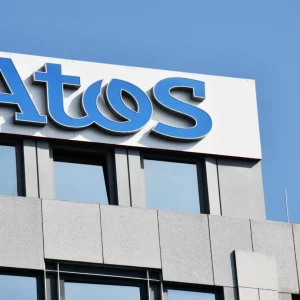
SPONSORED – On August 6, Verizon announced the launch of 5G Edge, its 5G mobile edge compute (MEC) offering – which includes access to AWS Wavelength – to two new geographical regions. Application developers and enterprise customers can now access AWS Wavelength compute and storage services via Verizon’s 5G Edge locations in Boston and the San Francisco Bay Area, writes Chris Drake, Principal Analyst – Global IT Technology and Software, GlobalData.
By embedding AWS Wavelength compute and storage services at the edge of Verizon’s 5G Ultra Wideband (UWB) network infrastructure, 5G Edge provides customers a differentiated computing platform for developing a wide variety of new digital services and applications that rely on ultra-low latencies and near real-time data processing. Autonomous and assisted-driving vehicles, immersive experiences that leverage augmented, virtual, mixed and extended reality (AR/VR/MR/XR), remote medical diagnostics, cloud gaming, and Massive IoT deployments are all example use cases that can benefit from 5G Edge architecture. These applications generate and harness large volumes of data to support analytical and artificial intelligence (AI) programs, including machine learning inference.
See also: What is AWS Wavelength?
MEC is a form of edge computing that provides an IT service environment and cloud computing resources at the edge of a mobile network, close to end users. While Verizon’s MEC offering is primarily optimized to work with its UWB 5G network infrastructure, it can also run effectively on Verizon’s 4G LTE network for use cases that have latency, bandwidth and technology requirements that are not dependent upon deployment with 5G for optimal performance. This ensures that customers can start using MEC today to develop and deploy new applications, prior to Verizon’s 5G UWB network coverage becoming more widely available.
For Verizon customers who currently rely on AWS for their cloud computing requirements, MEC offers a number of benefits and addresses several challenges that confront traditional cloud computing approaches. These include the rapid expansion of IoT devices and associated data volumes many enterprises currently face. They also include bandwidth and connectivity limitations, the high cost of data transit and storage, and the emergence of new applications that require low latency and high levels of performance. Meanwhile, the benefits of AWS Wavelength for application developers include a single pane of management across Wavelength Zone and AWS regions, pay-as-you-go pricing, and a consistent developer experience, with Wavelength offering the same APIs, tools, and functionality as in the AWS Cloud.
Verizon is already working with new customers who are leveraging 5G Edge and AWS Wavelength to innovate in industries including healthcare and sports information services. For example, Avesha works with various hospitals to assess how machine learning models can use AWS Wavelength and Verizon 5G to help doctors identify polyps in real-time. Traditional machine learning inference required the presence of a dedicated server with a GPU in the procedure room. However, with AWS Wavelength and Verizon 5G, the Avesha platform is able to connect the procedure room to inference models running on GPUs deployed at the cloud edge. Verizon’s 5G network facilitates the ultra-low latency inference of video streams, enabling physicians to carry out the near-real-time analysis on which their diagnosis depends.
Another customer, ShotTracker delivers more than 70 unique and autonomous basketball stats and requires millisecond latency to provide teams, broadcasters and game partners with instant analytics. Using the AWS Wavelength and Verizon 5G Edge solution will accelerate ShotTracker’s ability to handle existing data volumes, while enabling it to provide even more data, stats and analysis, in real-time, for teams, broadcasters and fans.
In addition to the benefits for Verizon’s enterprise, medium business and public sector customers, the launch of Verizon’s 5G Edge offering promises to have a major impact on the highly-competitive U.S 5G market. Verizon’s nationwide 5G coverage will emerge over time along with its current deployments of its 5G mmWave service. While low latency in 5G is dependent on network architecture, 5G NR signal waveform, and framing optimizations and is largely spectrum band-agnostic, the low-band 5G infrastructure some competitors are rolling out is not necessarily fast enough, due to the limited amount of spectral bandwidth available in the low band. 5G Edge is already a key component of Verizon’s network architecture and is seen as essential to the success of the operator’s 5G strategy. The partnership with AWS around AWS Wavelength has potential to drive new innovative use cases. These will not only generate revenues for both partners, but will help demonstrate the importance and future potential of combining 5G and cloud computing at the edge of the network.
For more information on Verizon 5G Edge, please visit us here http://verizon.com/5gedge and for more information on AWS Wavelength, please visit: https://aws.amazon.com/wavelength/
About the Author:
As Principal Analyst for Data Center Technology at GlobalData, Chris Drake is responsible for covering the emerging technologies that are remapping the traditional data center landscape. These include software and hardware products that are required to support public, private and hybrid cloud architectures, as well as the underlying virtualization and orchestration technology that is needed to enable process automation and workload management. He also covers the Converged Infrastructure market, with a focus on the latest generations of vendor pre-certified and optimized hardware/software stacks.






